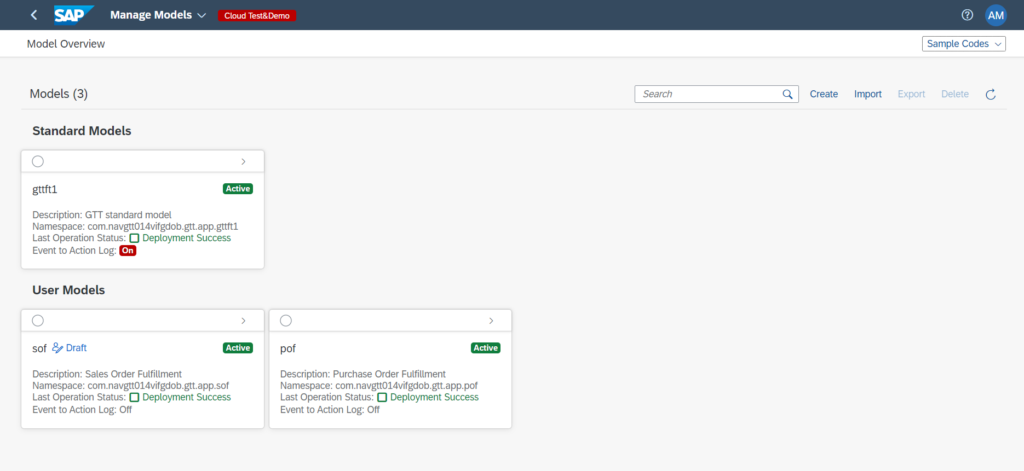Introduction:
In the fast-paced landscape of supply chain management,
real-time visibility has become a cornerstone for businesses seeking to
optimize their operations. SAP Global Track and Trace (GTT) emerges as a
powerful solution, providing a comprehensive platform for tracking goods and
shipments. At the heart of SAP GTT lie two essential components – Models and
Apps. This blog will navigate through the intricacies of Models, focusing on
the Standard Model and Template Model, their functionalities, and the value
they bring to supply chain management.
Understanding the Models in SAP GTT:
Standard Model: A
Ready-to-Run Solution
The Standard Model in SAP GTT is a pre-built, ready-to-run
tracking process developed, deployed, and maintained by SAP. This model serves
as a foundation for commonly used tracking scenarios, offering a streamlined
and efficient approach to supply chain visibility. While the standard model
provides limited customization options for tracking processes, it supports
minor enhancements such as user-defined fields, field types, event types, and
event-to-action scripts.
Currently, the Standard Model supports two tracking apps:
· Tracking Shipment App: Enables real-time
tracking of shipments from origin to destination.
· Monitor ASNs App: Facilitates the
monitoring of Advanced Shipping Notices (ASNs) for better control over incoming
shipments.
Template Model:
Tailoring Solutions to Specific Needs
In contrast to the Standard Model, the Template Model is not
part of the standard solution delivery with the global track and trace
subscription. Instead, SAP provides sample tracking scenarios in the form of
template models, available for download from the GitHub repository
(https://github.com/SAP-samples/logistics-business-network-gtt-samples).
The provided sample code serves as a foundation for tracking
scenarios and can be utilized as-is or fully customized to meet specific
requirements. This flexibility empowers businesses to tailor tracking solutions
according to their unique supply chain needs. The three template models
available for download are:
· Track Sales Order Fulfillment Template:
Focuses on tracking the fulfillment process of sales orders.
· Track Purchase Order Fulfillment Template:
Designed for monitoring the fulfillment stages of purchase orders.
· Track Shipments Template: Offers a
customizable template for tracking shipments through the supply chain.
Value Proposition of SAP
GTT Models:
- Efficiency through Standardization: The
Standard Model streamlines tracking processes, ensuring efficiency through a
ready-to-run solution that covers common scenarios in the supply chain. - Customization for Unique Requirements:
Template Models provide the flexibility needed for organizations with specific
or unique tracking requirements, allowing for full customization to meet
individual needs. - Open-Source Collaboration: With template
models available on GitHub, SAP encourages collaboration and innovation within
the community, fostering the development of tailored solutions.
Model Management with Manage Model App:
The Manage Models app within SAP GTT empowers model administrators to take charge of their tracking scenarios. Here, administrators can create models from scratch or customize existing ones to fit specific requirements.

The Model Overview page categorizes models into Standard Models (gttft1) and Template Models (sof and pof). The tasks performed within the Manage Models app include:
- Monitor Model Details
- Changes – Upgrade a Model
- View Model APIs
- Deactivate a Model
- Activate a Model
- Delete a Model

Conclusion:
SAP Global Track and Trace Models, whether Standard or Template, play a pivotal role in reshaping how organizations manage and visualize their supply chain data. The Standard Model offers a quick-start solution, while the Template Model empowers businesses to create tailor-made tracking scenarios. By leveraging these models, businesses can enhance their supply chain visibility, streamline operations, and adapt to the evolving dynamics of the global market.